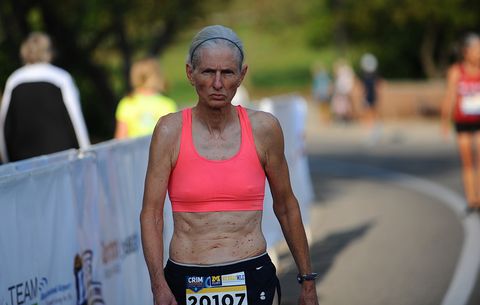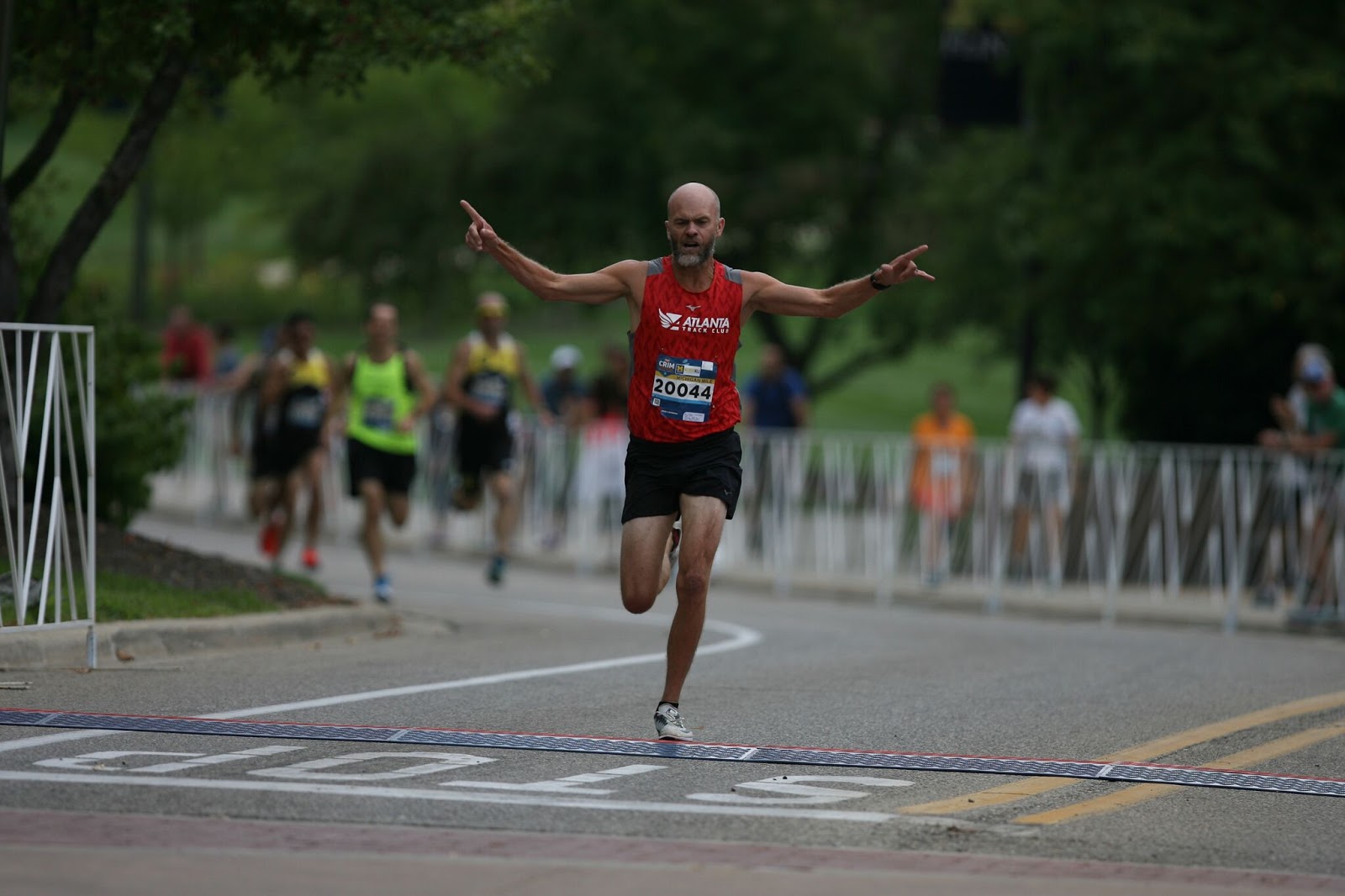Runners in the “masters” category, that is, over the age of 40, have unique characteristics that need to be understood by both coaches and the athletes themselves. By taking into account the major physiological changes that occur with age, you can achieve the best results and maintain or increase performance.
One of the main benefits of exercising for people over 40 is that it slows down the aging rate of the cardiovascular system. However, when a runner enters (or runs?) Into the Masters category (40+), physiological and biomechanical characteristics, as well as the level of performance, gradually but inevitably decrease. All this makes it difficult to compete on an equal footing with younger athletes.
The Masters category is now becoming more and more numerous, with high competition within the group and impressive results. For example, the number of finishers over 40 in the New York Marathon increased 1.7 times between 1980 and 2000. We must not forget that athletes become more experienced and enduring with age. Athletes such as Kelly Slater (surfing), Craig Alexander (triathlon) and Bernard Lagat (running) are breaking our notions of performance 40 and older.
The Masters category continues to grow and it is essential that athletes know how to prevent injury and improve performance. Below are five things to keep in mind for runners over 40 to avoid injury.
Specific injuries
A 2019 review found that older athletes were more likely to experience injuries to muscles and tendons below the knee: calf muscles, Achilles tendon and hamstrings, as well as complex injuries (calf muscles + foot muscles). Runners under the age of 40 are more likely to injure the knee and lower leg, encountering iliotibial syndrome and inflammation of the lower leg periosteum. The high incidence of below-the-knee injuries in master runners may be due in part to age-related changes in leg tendon stiffness. The less rigid Achilles tendon undergoes increased stretching when the toes are lifted off the surface, which in turn increases the risk of injury. The decrease in tendon stiffness in runners after 40 years of age can be as much as 20%. At the same time, if the Achilles tendon is too stiff, the risk of injury to the soft tissues of the lower leg increases. With greater rigidity, the Achilles tendon becomes more pliable (less stable in terms of energy storage and release). This forces the calf muscles to lengthen intensively under load, and repeated repetition of such a mechanism inevitably leads to injury.
Decreased leg strength with age
From the age of 30, we lose about 1% of the strength of some of the lower leg muscles per year. But the good news is that by working on the strength of these muscles with the help of specific exercises, you can simultaneously increase the rigidity of the tendons. Master runners with strong calf muscles exhibit greater Achilles tendon stiffness. Therefore, exercises to strengthen these muscles are a must for athletes over 40. Studies have shown that the higher the strength of the calf muscles, the lower the risk of inflammation and injury to the Achilles tendon.
Specificity of surfaces for master runners
Many athletes mistakenly believe that running on soft surfaces, such as grass or a park path, is healthier than running on asphalt or concrete because it reduces the shock load on your feet. However, research shows that the less a master runner trains on soft surfaces, the lower the risk of injury to the Achilles tendon and lower leg. And running on the sand in athletes over 40 increases the risk of injuries to the Achilles tendon by about 10 times. Scientists compared running on soft and hard surfaces and found that the risk of injury to the Achilles tendon in the second case was reduced by about 53%.
Running protects against hip and knee injuries
Unlike the fairly common calf and Achilles tendon injuries, hip and knee injuries are rare in master runners. And this goes against the widespread belief that running is “bad for the knees” and leads to deforming joint diseases. Many people believe that walking is much more beneficial for joints than running, arguing that the shock load on the lower limbs when walking is less harmful and “destructive”. Nevertheless, scientists have shown that the total load on the knee joint is almost the same both when walking and when running. In fact, a number of studies show that running has a beneficial effect on joint health, having a protective effect.
The researchers also found that recreational jogging reduced the risk of developing osteoarthritis (a chronic condition that damages the cartilage and surrounding tissues) of the hip and knee joints compared to those who are not jogging. It has been proven that even in master athletes with existing knee osteoarthritis, running did not lead to an increase in symptoms and prevented the progression of the disease. However, it should be noted that running does not protect against osteoarthritis in athletes who have practiced high volume / high intensity running for a long time. Like elite athletes, these runners have the same risk of developing hip and knee problems as those who are sedentary. Runners who stick to moderate volume or intensity have the lowest risk of developing osteoarthritis. A 2018 study found that among marathon runners, the prevalence of osteoarthritis of the hip and knee was 8.8%, while in a comparable group of non-runners it was 17.9%.

Quadriceps strengthening exercises have been shown to improve the quality of knee cartilage in master runners suffering from osteoarthritis of the knee – even those who have had knee surgery in the past. Other strategies for reducing the symptoms of knee osteoarthritis may be to change the cadence. Higher cadence can reduce the overall stress on the knee joint. In addition, cross-training, such as swimming or cycling, is effective in preventing the development of osteoarthritis. In 2019, a study was conducted to assess the short-term impact of long-distance running (a four-month marathon training program followed by the first marathon) on knee health in 82 middle-aged runners. The authors concluded that marathon running is associated with improved knee health.
Features of the physiology of runners over 40
In addition to changes in the musculoskeletal system during aging, there are numerous functional changes in the cardiovascular system that affect endurance and performance. One study of 55 runners between the ages of 30 and 80, running an average of 50 km per week, showed that athletes can develop the following physiological changes:
- Trained runners have a 7% decrease in VO2max between the ages of 30 and 70.
- The maximum heart rate decreases by 3.2% per decade.
- The average time at a distance of 10 km is growing by 6% over a decade.
- Cardiac output decreases by 5.8% per decade.
The researchers concluded that the decline in VO2max with aging in runners is mainly due to factors such as a decrease in maximum heart rate and cardiac output. Scientists believe that prolonged endurance training combined with high-intensity training is beneficial for slowing down the decline in cardiovascular function, although it cannot completely stop it.
Conclusion
Master runners can definitely enjoy and benefit from running throughout their lives. Considering all the benefits of running in general, and for a runner over 40 in particular, it’s safe to say that there is no reason to stop training. And even if you’ve never run before, you should start doing it, no matter how old you are.


